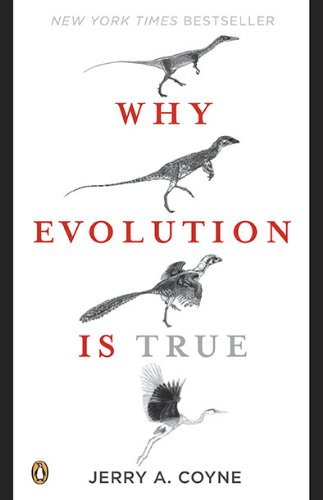Speciesization in a Test Tube
We can even see the origin of new, ecologically diverse bacterial species, all within a single laboratory flask. Paul Rainey and his colleagues at Oxford University placed a strain of the bacteria Pseudomonas fluorescens in a small vessel containing nutrient broth, and simply watched it. (It’s surprising but true that such a vessel actually contains diverse environments. Oxygen concentration, for example, is highest on the top and lowest on the bottom.) Within ten days—no more than a few hundred generations—the ancestral free-floating “smooth” bacterium had evolved into two additional forms occupying different parts of the beaker. One, called “wrinkly spreader,” formed a mat on top of the broth. The other, called “fuzzy spreader,” formed a carpet on the bottom. The smooth ancestral type persisted in the liquid environment in the middle. Each of the two new forms was genetically different from the ancestor, having evolved through mutation and natural selection to reproduce best in their respective environments. Here, then, is not only evolution but speciation occurring the lab: the ancestral form produced, and coexisted with, two ecologically different descendants, and in bacteria such forms are considered distinct species. Over a very short time, natural selection on Pseudomonas yielded a small-scale “adaptive radiation,” the equivalent of how animals or plants form species when they encounter new environments on an oceanic island.
Notes:
Bacteria evolve into different species in order to adapt to the different environments at the bottom and top of a test tube.
Folksonomies: evolution experiment
Taxonomies:
/science/medicine/genetics (0.513062)
/health and fitness/disease (0.484822)
/science/biology/zoology/endangered species (0.472131)
Keywords:
Test Tube Bacteria (0.975381 (neutral:0.000000)), single laboratory flask (0.947773 (neutral:0.000000)), environments. Oxygen concentration (0.870498 (neutral:0.000000)), natural selection (0.835775 (positive:0.572813)), smooth ancestral type (0.831061 (positive:0.278588)), ecologically different descendants (0.828160 (positive:0.452543)), bacteria Pseudomonas (0.738271 (negative:-0.450378)), nutrient broth (0.704648 (positive:0.253488)), fuzzy spreader (0.661016 (negative:-0.557821)), wrinkly spreader (0.647452 (negative:-0.301766)), Paul Rainey (0.643620 (neutral:0.000000)), different species (0.628070 (neutral:0.000000)), different environments (0.624437 (neutral:0.000000)), small vessel (0.619371 (positive:0.253488)), Oxford University (0.614859 (negative:-0.450378)), respective environments (0.598764 (neutral:0.000000)), different parts (0.595803 (neutral:0.000000)), oceanic island (0.595218 (positive:0.299395)), additional forms (0.590442 (neutral:0.000000)), distinct species (0.586316 (neutral:0.000000)), adaptive radiation (0.584311 (neutral:0.000000)), liquid environment (0.582480 (positive:0.278588)), new forms (0.573784 (neutral:0.000000)), short time (0.572482 (negative:-0.464429)), ancestral form (0.560104 (neutral:0.000000)), bacterium (0.370934 (neutral:0.000000)), speciation (0.370225 (negative:-0.268517)), colleagues (0.367089 (neutral:0.000000)), strain (0.364412 (negative:-0.450378)), ancestor (0.361843 (neutral:0.000000))
Entities:
Paul Rainey:Person (0.822165 (neutral:0.000000)), Oxford University:Organization (0.724065 (negative:-0.450378)), ten days:Quantity (0.724065 (neutral:0.000000))
Concepts:
Evolution (0.983734): dbpedia | freebase | opencyc
Bacteria (0.768999): dbpedia | freebase | opencyc
Natural selection (0.610013): dbpedia | freebase
Biology (0.512944): dbpedia | freebase | opencyc
DNA (0.496462): website | dbpedia | freebase | yago
Organism (0.484036): dbpedia | freebase
Speciation (0.470871): dbpedia | freebase
Mutation (0.469180): dbpedia | freebase





